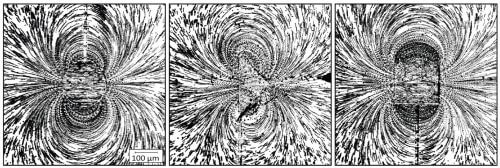The gradual miniaturization of transistors from vacuum tubes to microchips has led to the miniaturization of computers from machines that take up entire rooms to devices that fit in our pockets. Similarly, the development of the field of lab-on-a-chip (lab-on-a-chip) is expected to revolutionize chemical and biological analysis, by miniaturizing large laboratories into microfluidic chips - a chip containing tiny flow channels.

The gradual miniaturization of transistors from vacuum tubes to microchips has led to the miniaturization of computers from machines that take up entire rooms to devices that fit in our pockets. Similarly, the development of the field of lab-on-a-chip (lab-on-a-chip) is expected to revolutionize chemical and biological analysis, by miniaturizing large laboratories into microfluidic chips - a chip containing tiny flow channels.
Although the concept of a lab-on-a-chip was introduced more than 30 years ago, the microfluidic systems that exist today are far from realizing this vision. This is largely due to the fact that these chips are mostly constructed of materials such as polymers and glass in which channels with a predetermined shape are cut. This rigid structure allows them to be used only for the defined role for which they were produced. To change their application, their physical structure must be changed. All this is very far from the functional flexibility that should characterize lab-on-a-chip systems.
This is where a joint research group of scientists and engineers from the Faculty of Mechanical Engineering at the Technion and the IBM Research Center in Zurich enters the picture, led by Prof. Moran Berkowitz from the Faculty of Mechanical Engineering and Dr. Govind Gaikla from the IBM Research Center in Zurich.
In an article published last week in the journal of the American Academy of Sciences PNAS, the researchers present a completely new paradigm: a microfluidic chip in which the liquid is channeled in virtual channels controlled by electric fields. The flow patterns of the liquid are controlled electronically and thus make it possible to manipulate the flow at any point in time.
"When the electric field acts on charges close to the surface, it moves them and drags the liquid with it," explains Dr. Federico Pretora, the lead author of the article. "Using an array of electrodes at the bottom of the microfluidic cell and controlling their electrical charge, we are actually establishing an array of tiny conveyors that we can dynamically control in their directions and strength."
The group demonstrated the ability to generate a wide variety of flows and change them in real time. "What's really exciting is that since we influence the liquid from the inside, we can also create unique flows that cannot be achieved in conventional ways such as pressure pumps," said Vesna Bacheva, who also signed the article. "For example, we can mix the liquid in certain areas without changing the flow around them, or vice versa - create areas where the liquid stands still while everything flows around them."
The researchers believe that the current development paves the way for the creation of dynamically controlled microflow systems, and may lead to a paradigm shift in the lab-on-a-chip field. The research was funded by the European Commission (Marie Curie grant) and the European Research Council (ERC grant).

3 תגובות
The transistors were never vacuum tubes….
One of the most interesting studies I read recently…..
Biological and chemical application is just the beginning...
A combination of both can determine the conductivity level of liquid metal and thus enable computing applications while lowering resistances and current consumption... (personal opinion)
The wording of "the gradual miniaturization of transistors from vacuum tubes" should be changed because vacuum tubes are not transistors.